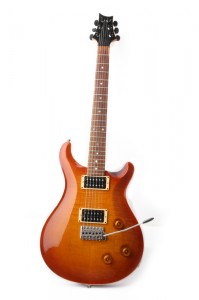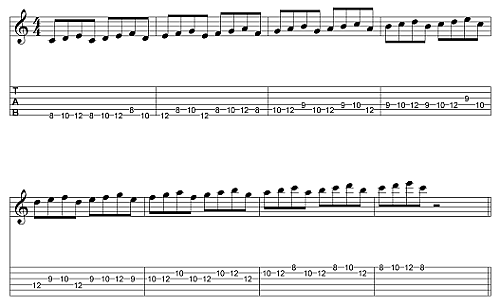Have you ever wondered how your favourite guitar players create those super-cool guitar solos?
You know the ones I’m talking about. They’re those guitar solos that give you goose bumps every time you hear them.
The good news is it’s not all magic, natural talent, or even musical genius that is required.
The plain cold hard truth is there are certain things you can do that will allow you to create your own killer guitar solos. But before we look at this, we need to bust a myth.
A lot of guitarists don’t want to admit this, but often their “improvised” guitar solos are not really all that improvised—they’ve been practiced, and practiced and practiced.
Let me explain this in more detail.
Every time a guitar player improvises a guitar solo they are not usually creating a solo that is 100% unique. Usually what comes out in a guitar solo is what the guitar player has been working on in their practice sessions.
If you had a hidden microphone where your favourite guitar player practices, you would find that most of the stuff that they practice ends up becoming parts of their guitar solos. They practice one lick like this and another one a different way. Then those licks might get changed around a bit or moved to a new key. Eventually though, they will end up becoming part of a guitar solo.
So now that you realize that what the pros practice tends to come out in their guitar solos, you need to start to think about what you practice.
Ultimately, a guitar solo is just a combination of scales and arpeggios that form a melody line. One thing you can do is improve your guitar scale mastery. Instead of just practicing scales forwards and backwards, there are other more interesting things you can do with them.
One thing you can work on is practicing guitar scales in patterns. Then as you improvise you can draw from these patterns. The more patterns you have at your fingertips (yes the pun is intended) the more material you have to draw from as you compose or improvise a guitar solo.
One approach to patterns is to make use of what are sometimes called digital patterns. This is when you treat each note as a number, regardless of its true intervallic distance. You then extract the notes from the scale in the order prescribed by the pattern.
In a digital pattern you assign each note of the scale with a number. If a scale contains seven notes the notes would be numbered 1-2-3-4-5-6-7. Remember, this is regardless of the true intervallic relationships found in the scale.
Next, extract the notes from the scale in the order prescribed by the digital pattern.
Let’s take a look at an example where the digital pattern is 1-2-3-1. We will use the C major scale. The C major scale contains the following notes:
C-D-E-F-G-A-B-C
So here is the pattern:
1 2 3 1, 2 3 4 2, 3 4 5 3, etc.,
C D E C, D E F D, E F G E, F G A F, G A B G, A B C A, B C D B. Now repeat this up one octave.
Here is the tab for this pattern:
Here are some of the many possible digital patterns:
1 2 3 1, 2 3 4 2, 3 4 5 3, etc.,
1 3 2 1, 2 4 3 2, 3 5 4 3, etc.,
1 2 3 5, 2 3 4 6, 3 4 5 7, etc.,
1 2 5, 2 3 6, 3 4 7, etc.,
1 3 1, 2 4 2, 3 5 3, etc.,
1 3 5, 2 4 6, 3 5 7. etc.,
1 3 5 7, 2 4 6 8, 3 5 7 9, etc.,
So grab your guitar and start to apply the above digital patterns. Once you have nailed these down with your favourite guitar scales, apply them to your own guitar solos.
If you would like to learn more about digital patterns and other cool things you can use to create your own killer guitar solos, check out:












a myth
I think it’s alright if it’s not 100% unique, as lo9ng as it sounds good.